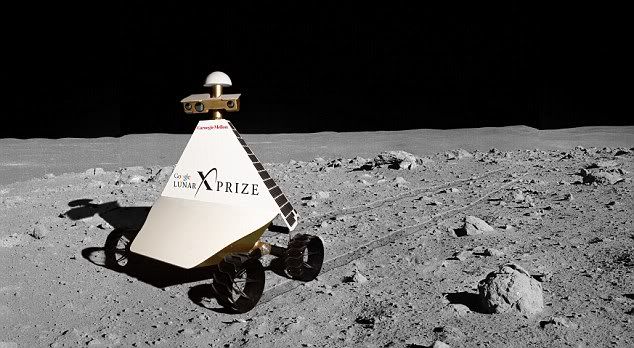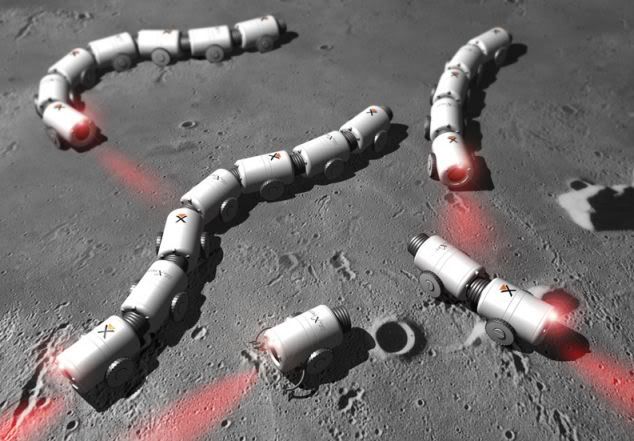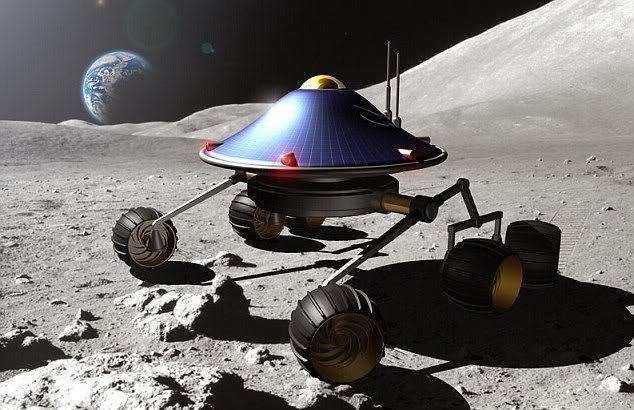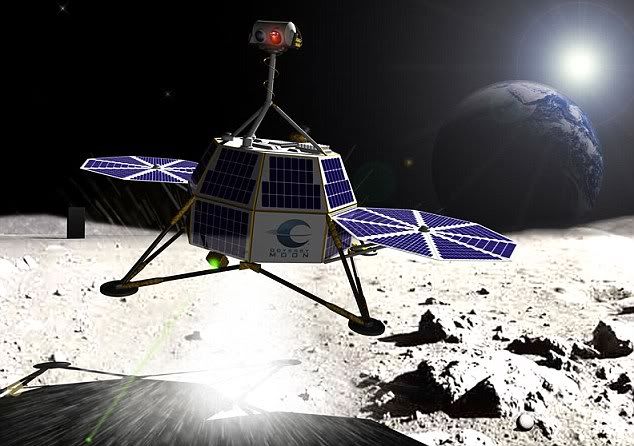But now backyard inventors are hoping to land their own weird and wonderful spacecrafts on the moon after Google launched a £20million competition.
Nasa had previously estimated that such voyages would cost more than £1billion - with some skeptics suggesting that it is almost impossible to even fly to the moon.
But since the Isle of Man government has lifted tax restrictions of space exploration a flurry of do-it-yourself voyages throughout the cosmos are expected.
Internet search giant Google became one of the first to take advantage of the tax break when it announced the Lunar X prize in September 2007.
Twenty two teams who have worked tirelessly on their strange machines will meet in the Isle of Man tomorrow to thrash out the final details of the missions.
Representing Britain in the competition is the crew behind Astrobotic, a four-wheeled silver machine that resembles a moving road sign.
Julian Ranger, the UK financier who is raising cash for Astrobotic, said: 'We believe we can get the cost [of reaching the moon] down to $50m, a price tag that will transform lunar exploration and make the moon a target for for all sorts of commercial operations.
'Part of our business plan will be to get our rover to move round the site and take a 3D high-definition film of it.
'If nothing else, it should prove to the doubters that the Apollo missions really took place.
'We hope to use SpaceX's Falcon 9 rocket to get to the moon.The cost would normally be around $100m, but we hope we can negotiate a special deal for this high-profile project.'
Other hopefuls in the competition include Team Italia whose craft is a green dome supported by six spider-like legs.
America's entry, Jurban, looks like a large worm designed to negotiate the moon's rough terrain of craters with several small capsules joined together in the same way as a train.


The Barcelona Moon Team has entered a more tradition flying-saucer that was built by a jewelery designer. It has a body that resembles an upside down bow with flashing lights on the rim.
The $20million prize will be given to the first team that lands their craft on the moon and directs of journey of more that 500 metres.
An addition $4million is on offer for anybody whose spaceship survives the incredible cold of the lunar atmosphere and another $2million bonus if the craft is launched from Florida. The second prize is $5million.
If nobody manages to reach the moon by December 2012 the prize money will be dropped to $15million. If still nobody has succeeded two years later the competition will be scrapped.
Ranger added: 'It is not the technology that is holding us back. We could be ready in less than a year. Raising the cash will take longer, however.'
'At present, the exact rules of the competition have not been worked out. The organisers and competitors need to work out how they share out the revenue generated by the flights. That is what we are going to do this week at our meeting. Then it will be a matter of raising the money – and flying to the moon.'
The Google Lunar X prize was created following the success of the Ansari X prize which was established in 1996 to inspire private investment in manned space travel.
The $10m prize was won by aeronautical engineer Burt Rutan. His SpaceShipOne craft was flown twice within a month to the edge of space in 2004.
The same technology is now being used to build Richard Branson's Virgin Galactic fleet of spaceships which are scheduled to carry tourists to space by 2012. Tickets are $200,000 each.


















